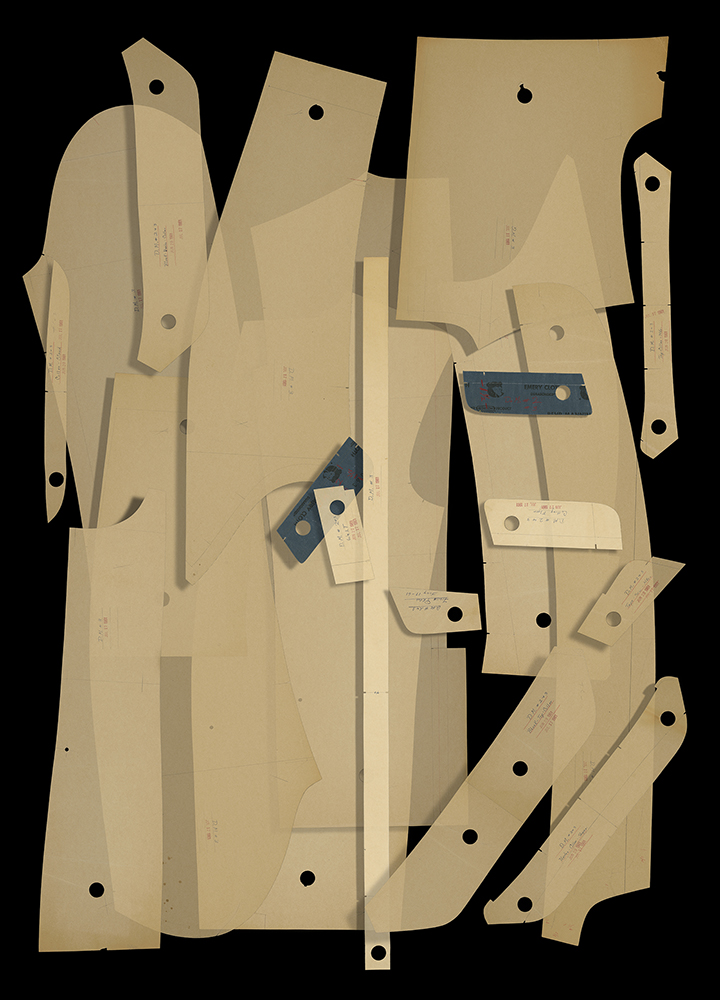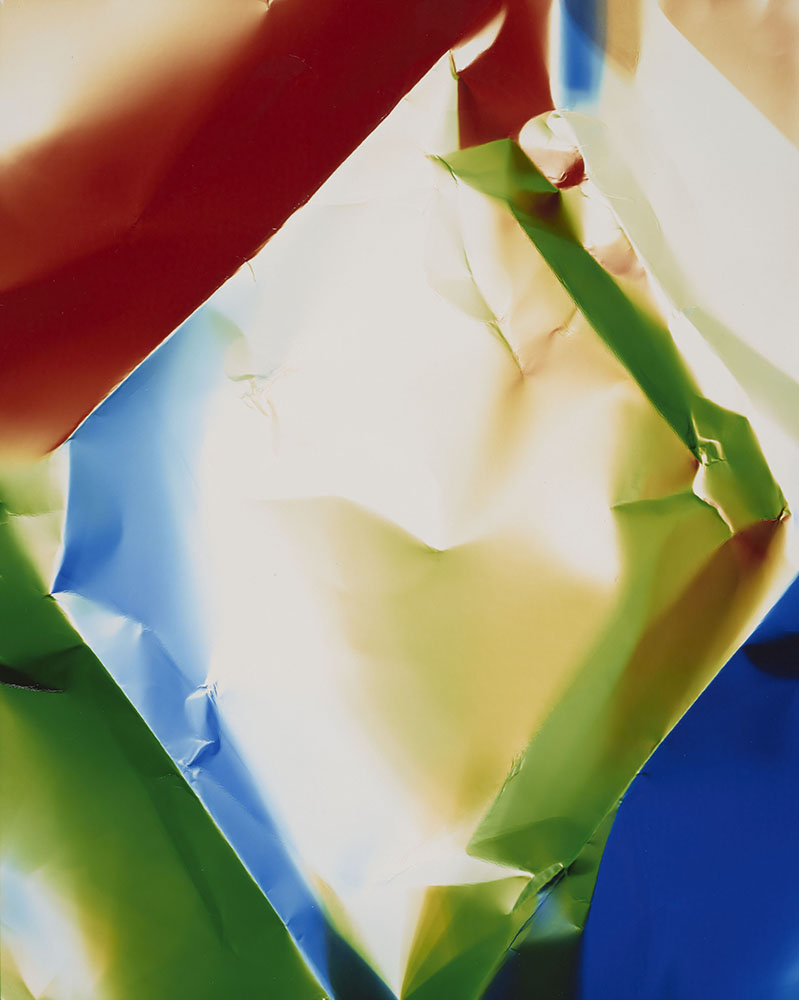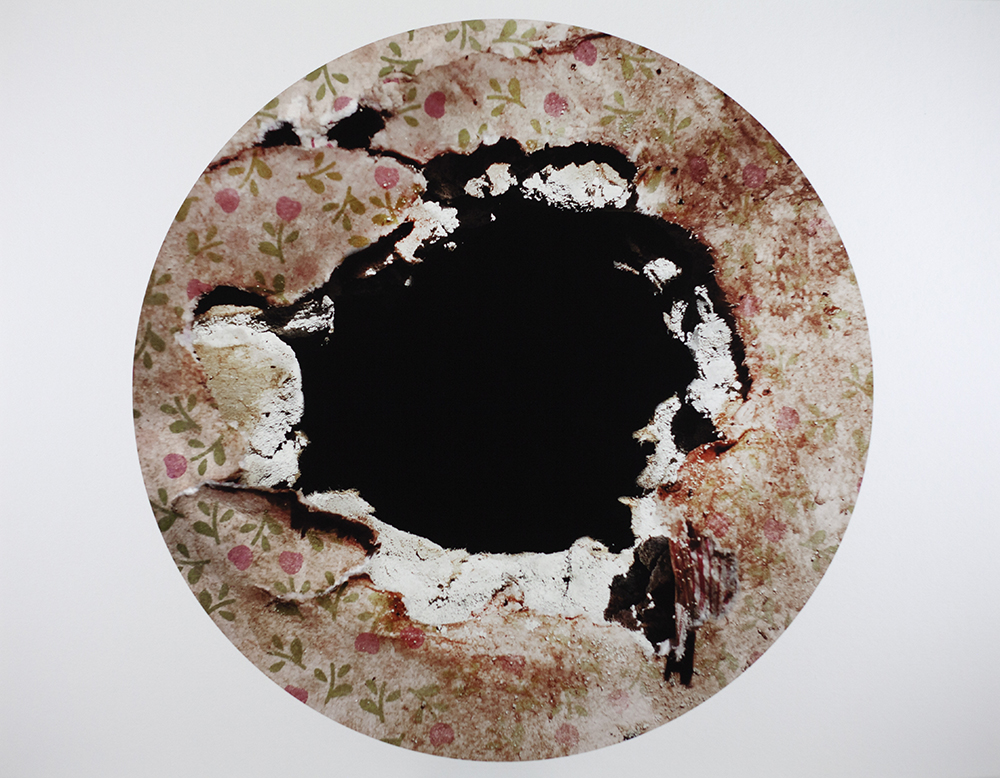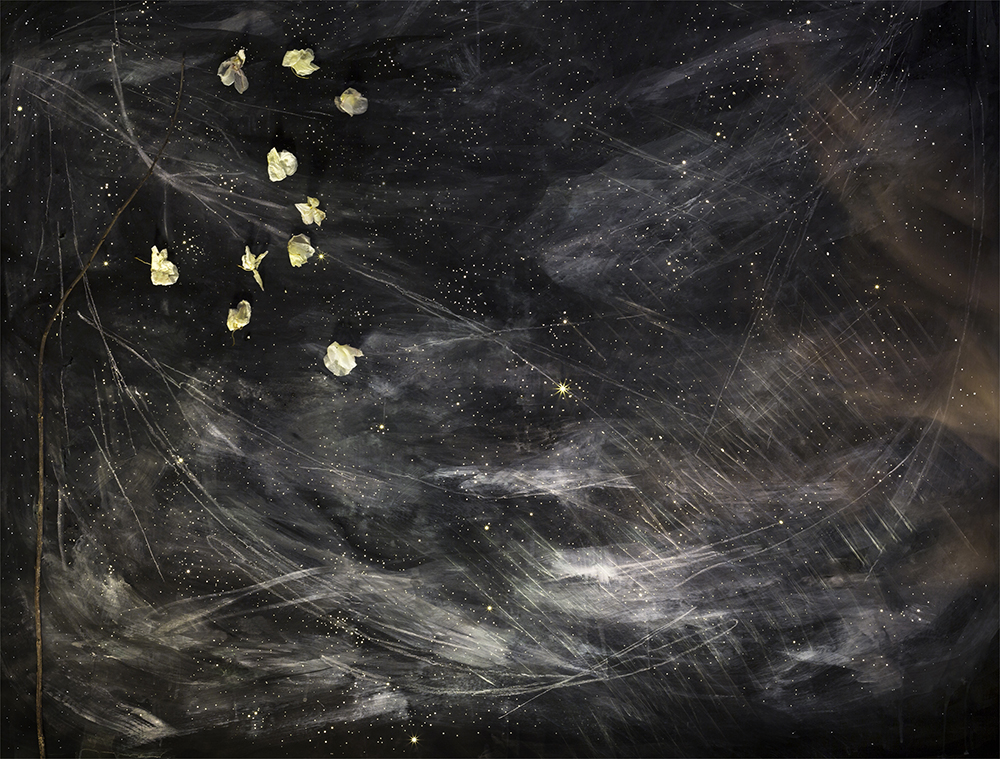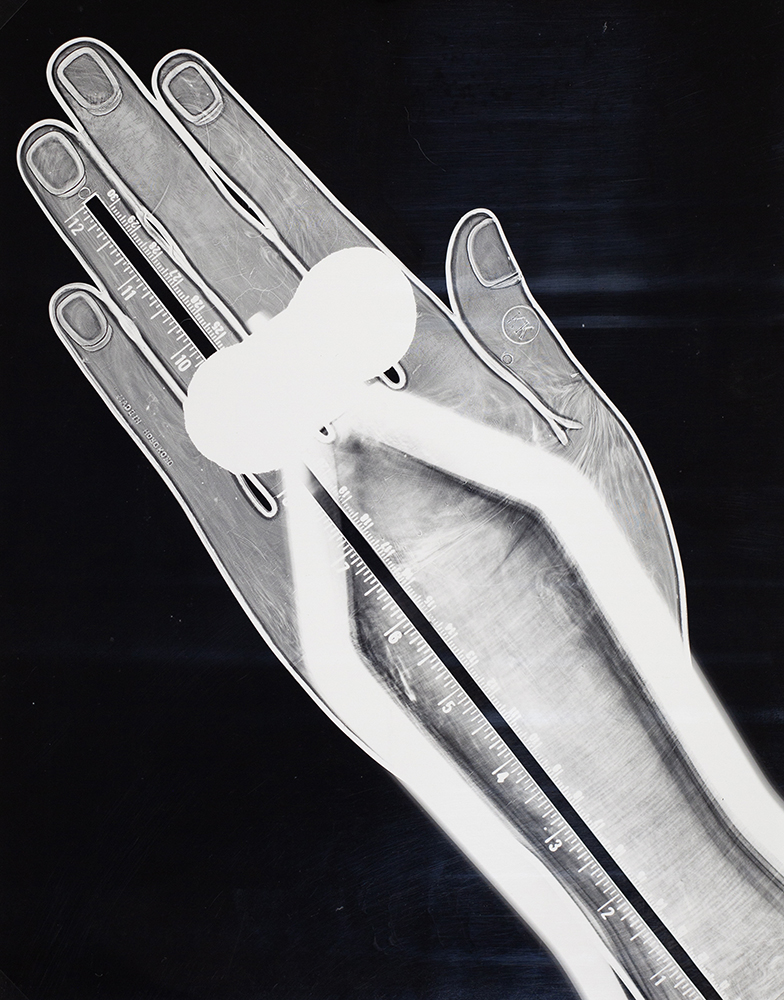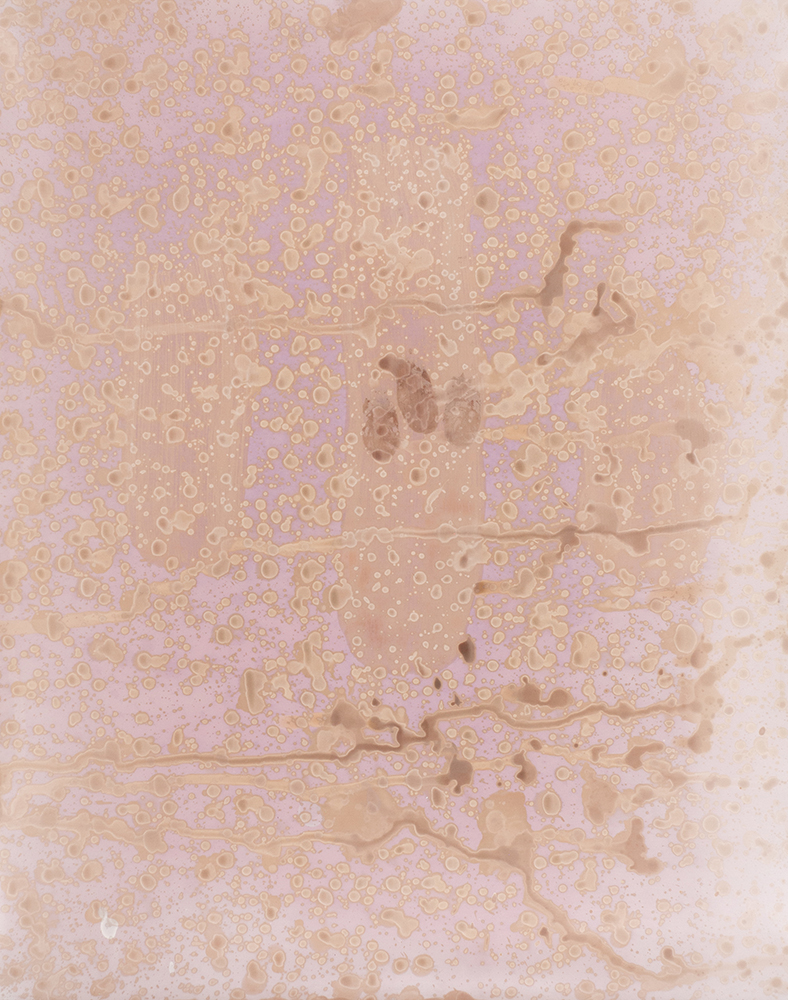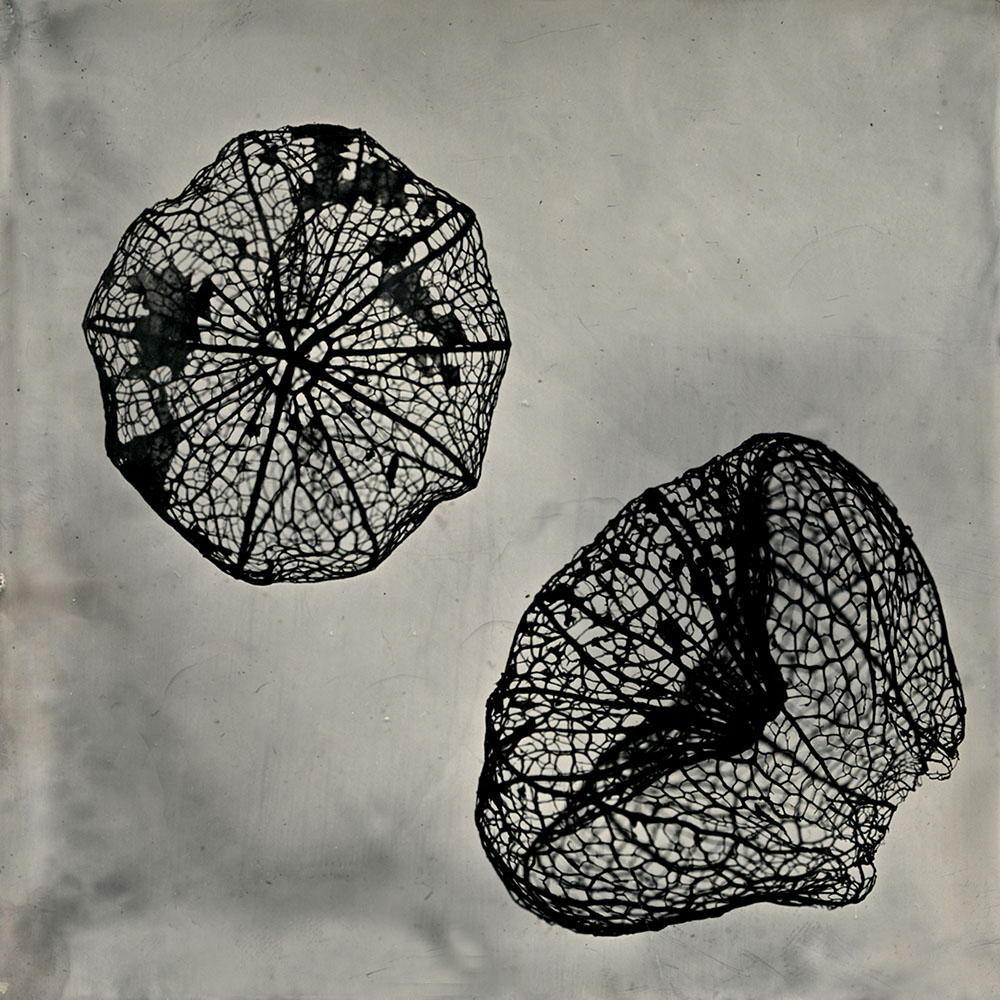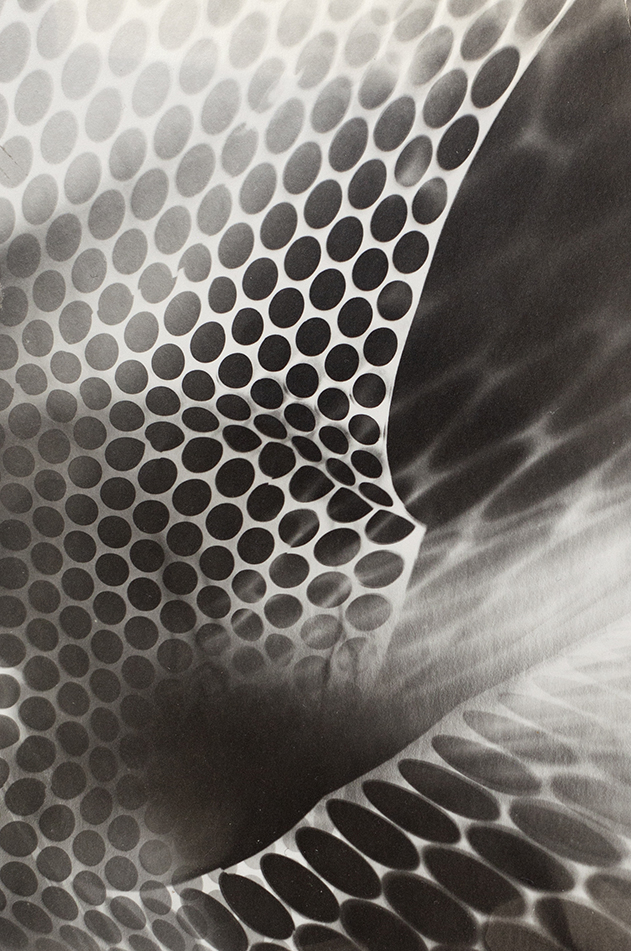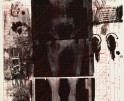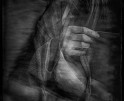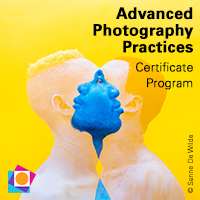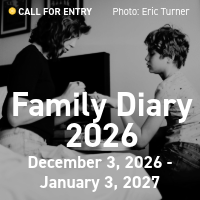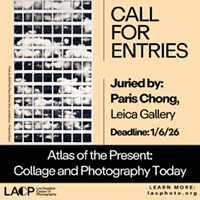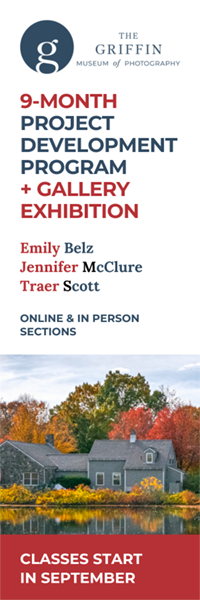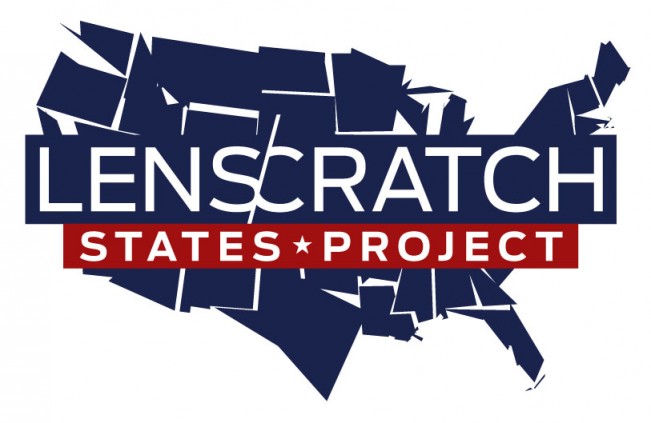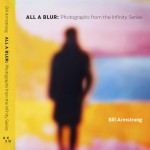Archive 192: Abstract Photographs by Women
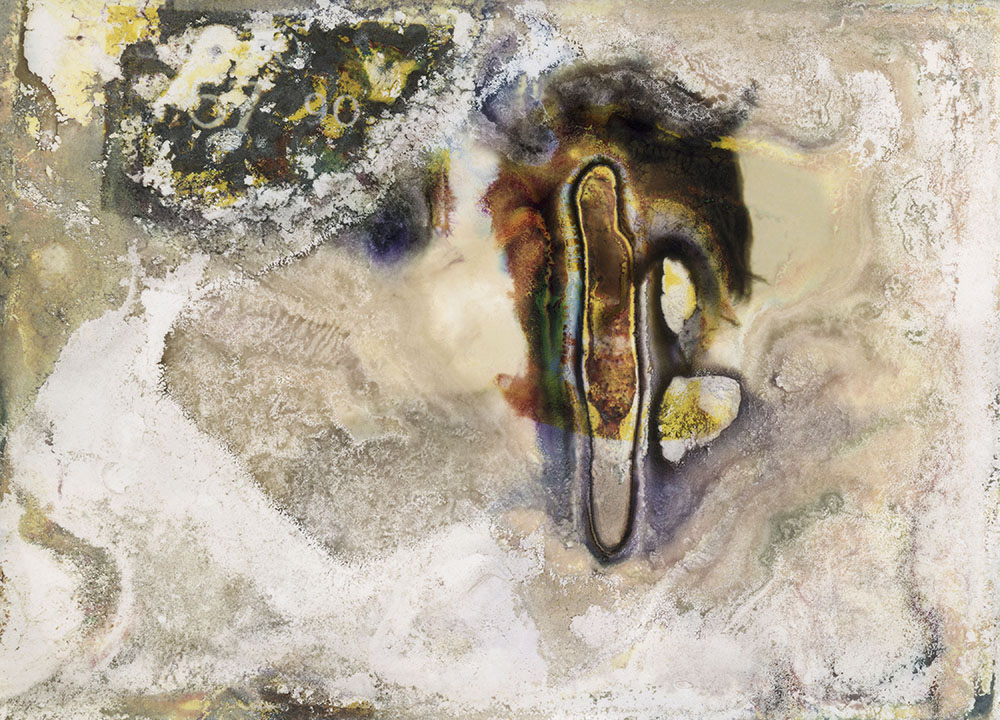
©Jennifer Garza Cuen (American, b. 1972) Nicole A. Scarborough 90-3888, from Criminal Abstraction series 2016 Inkjet print 11 x 17 inches
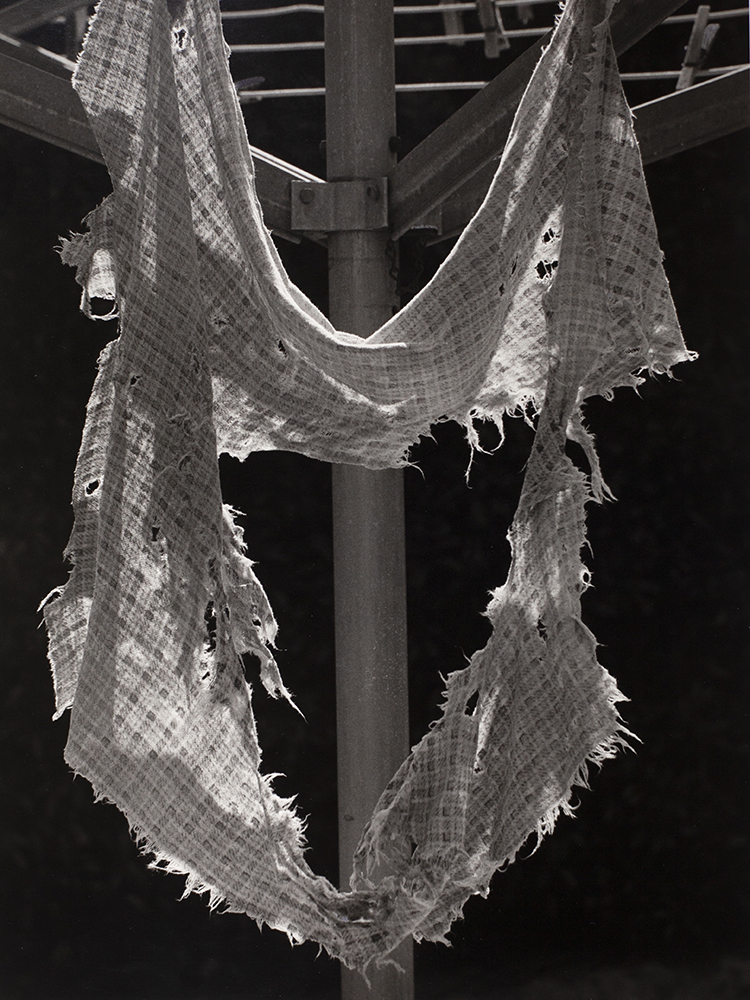
©Ruth Bernhard (American, born Germany, 1905-2006) Rag, Sunland California 1971 Gelatin silver print 13 ½ x 10 x inches
The Albin O. Kuhn Library & Gallery at the University of Maryland, Baltimore County has recently opened an important exhibition featuring a selection of objects from Archive 192, an independent archive, founded by Louie Palu and Chloe Coleman, dedicated to preserving and celebrating abstractionist works by women photographers. The exhibition will run through May 31st, 2025. The prints on view survey the array of photographic processes and diverse techniques of abstraction employed by photographers over the past century. Related ephemera, including publications, artist books, and posters document the evolution of abstractionism in photography and political movements that impact women working within the medium.
Archive 192 is an independent archive dedicated to preserving and celebrating abstractionist works by women photographers established in 2015 by photographer Louie Palu and photo editor Chloe Coleman. The archive, which now holds over 200 prints, books and ephemera, challenges conventional narratives of the history of photography that center documentary realism and aims to counter underrepresentation of work by women in institutional collections.
This exhibition presents a selection of photographs from Archive 192 that explore the diverse techniques of abstraction, including framing, cropping magnification, and altering chemical processes. These visual strategies present unfamiliar views of real-world objects and change the appearance of photographic prints to create non-representational images. The photographs on view also represent the array of photographic processes employed by photographers in pursuit of abstraction over more than a century, including cyanotypes, C-prints, tintypes, and Polaroid color instant prints. Related ephemera including publications, artist books, and posters document the evolution of abstractionism in photography and the political contexts, such as the feminist movement, that impact women working within the medium.
An interview with Louie Palu follows.
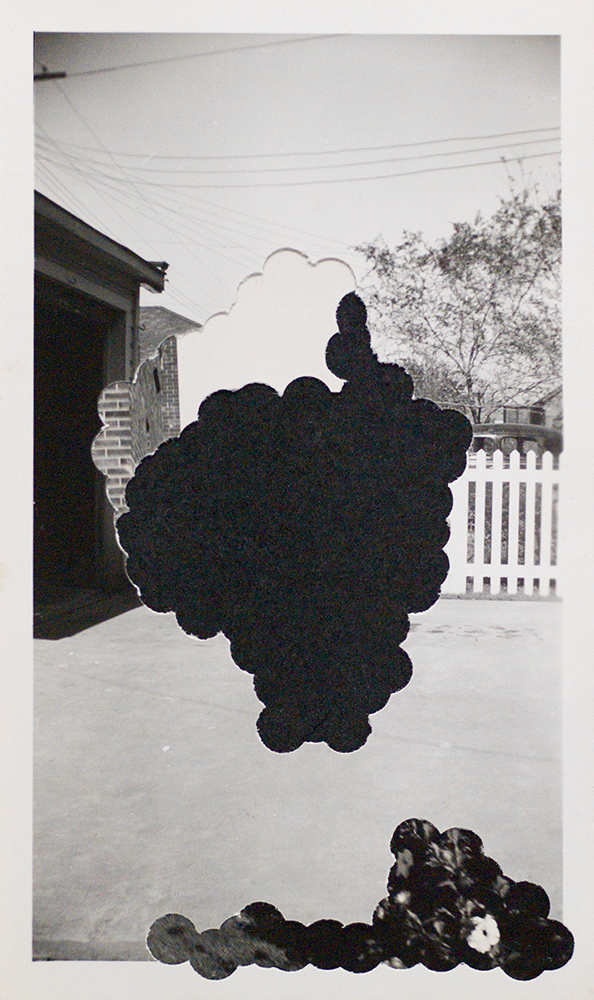
©Odette England (Australian/British, b. 1975) Punched #4 2018 Found photographs, hand-punched and layered 4.5 x 2.5 inches
Aline Smithson: Congratulations on the fantastic exhibition and collection you have created. How did Archive 192 get started?
Louie Palu: The idea for this archive came from curator Rebecca Senf, a brilliant curator and very strong influence on how I think as a photographer. This all started in 2012 when I was at the Museum of Fine Arts Houston for the War Photography Exhibition curated by Anne Tucker along with Will Michels, and Natalie Zelt. They had amazing stories on how they collected photographs to build the exhibition, and it rekindled my interest in archives. My first internship was in 1987 at Gallery 44 in Toronto when I worked on Verant Richard’s archive when I was in college. This was followed in 1991 when I worked for Mary Ellen Mark in New York City scanning her archive. I really enjoyed organizing objects of art, prints, contact sheets, and negatives. The most rewarding part of the process was slowly forming a view of what the artist’s intention was.
After Houston, I wanted to make creating an archive a part of my practice. For a few years I had a lot of failed ideas of what an archive I would create could be. In 2015 I had a research fellowship at the Center For Creative Photography at the University of Arizona to study Milton Rogovin. This became an important turning point in my photo career because I met curator Rebecca Senf. I can listen to her talk about photography forever, she is a unique thinker who understands big ideas. I kept going to her office with boxes of prints to have conversations. We formed a friendship, I mentioned wanting to start an archive. It’s true you can love archival boxes of prints and find friends who like them as much as you! She sent me a link to an auction to support the Phoenix Art Museum and she asked what work I liked. I responded with a list of works I found most interesting, without realizing I had selected work only by women that was all abstract. In a much longer conversation than I can repeat here, she suggested that an archive of abstractionist work by women would be a unique undertaking with purpose, I knew immediately that this fit well into how I was thinking politically. The first piece I acquired was by Claire A. Warden. In the last few years photo editor Chloe Coleman has joined me in helping manage the archive.

©Claudia Fährenkemper (German, b. 1959) Natriumchlorid, 300X, from Habitus series 2002 Gelatin silver print 11×14 inches
AS: How did you come up with the name Archive 192?
LP: Archive 192 employs the number 291 in reverse referencing Gallery 291 started by Alfred Stieglitz. It was a key space and moment in the growth of photography. It’s not a criticism of Alfred Stieglitz, just a reordering and challenge to how we might have learned about the history of photography.

©Lori Hepner (American, b. 1981) The parking lot became an ice rink on the first freeze. People were skating! 2014 Inkjet print 13 x 19 inches
AS: You are ten years in with the collection, what draws you to collect work?
LP: I remember when I purchased the first piece, I was freaked out because making a living to support my own work was hard enough. But now I was going to buy other people’s work? Yes, I was! Slowly I found ways to do it, so I traded prints for prints, did favors, did extra assignments to pay for work, and more. When my mother died in 2018, I realized that the archive had nearly from the beginning had her influence and stamp on many of my political manners of thinking. She and my sister from a very young age taught me about women’s rights and the fight for equality. The archive really expanded after she passed away, the core of the collection was purchased with some money she left me. From this I learned that equality for women is as much an issue for men as it is for women.
I remember acquiring a print by Florence Henri, which is essentially a work related to the Bauhaus, that was exciting. I felt an energy and responsibility realizing that I was now the caretaker of this work that has a unique narrative, some prints I have are over a century old. The process of creating this archive felt political and very much like building a photo essay of my own work to investigate an issue or challenge something. Archive 192 is an independent archive free of the rules and gate keeping at larger institutions that are slow at collecting and exhibiting. This archive as a project felt like a punk rock band challenging the status quo, that way of feeling has always been very motivational. How I collect, is that I am always looking for work that explains how to challenge convention or pushes back against traditional forces of control. I also began collecting politically adjacent ephemera like materials by the Guerilla Girls and political zines, posters and letters fighting for gender equality.
AS: How did the exhibition come about? Is this the first time the work has been shared with the public?
LP: The first public event related to Archive 192 was a presentation followed by Q&A with Claire A. Warden at Filter Photo Festival in Chicago in 2019. I had planned to have the first exhibition at University of the Arts in Philadelphia, with the help of Julianna Foster (who has work in Archive 192), but it was cancelled due to the pandemic. In 2018 while Archive 192 was in its earlier stages, I had work in a group exhibition at the Albin O. Kuhn Library & Gallery at the University of Maryland Baltimore County (UMBC) where I met curators Emily Hauver and Beth Saunders. They hosted an exhibition of my work on the Arctic in 2022, this was when we discussed exhibiting Archive 192. Beth and Emily are great to collaborate with. In a world where museum exhibitions and institutions move slowly and follow convention, they have the right energy and can quickly pivot to new ideas and artists.
AS: As an editor and photographer, I have watched the rise of photography made by women. The alternative process realm has been dominated by women in the last decade. Archive 192 is so exciting because you are really creating a historical archive that features the feminine presence in photography.
LP: I really enjoy researching photography and learning about other artists. It’s an exciting time to be supporting women in their drive to create and express how they feel about their communities and the world and finally get the credit they should have had all along. It’s clear to anyone who knows me well, that I like challenging any system in place that is there to control how we think and feel.
Some artists in the archive have used historical processes like cyanotype and collage. But, if we consider work by someone like Rita Maas, lens-based work combined with a simple concept can also advance new ways of thinking and be innovative and political. I also believe that we need to continue to think about prints on walls and why that form may not always be the be all and end all of how we make work. The book is a significant form in photography, Paula McCartney, Qiana Mestrich, Barbara Blondeau, and H. Lisa Solon are all examples of what I am looking at. Qiana Mestrich’s zine in particular is important in my mind because it runs parallel to forms used in political outreach such as the Guerilla Girls zine which is also on display at UMBC. Quiana’s zine was produced by Stella Kramer, who has long been on my radar as an innovative and action focused thinker. Right now, collecting a zine with political purpose is more important to me than an archival inkjet print, which some artists want to call an archival pigment print, which in my mind are one in the same. I am collecting less and less of this form because most of the time these are reproductions of original works. I am focused on collecting a lot of silver-based prints and photo-based sculpture at the moment.

©Anne Leighton Massoni (American, b. 1973) This Much XIII 2018 Found photograph with silver leaf 5 x 3 inches
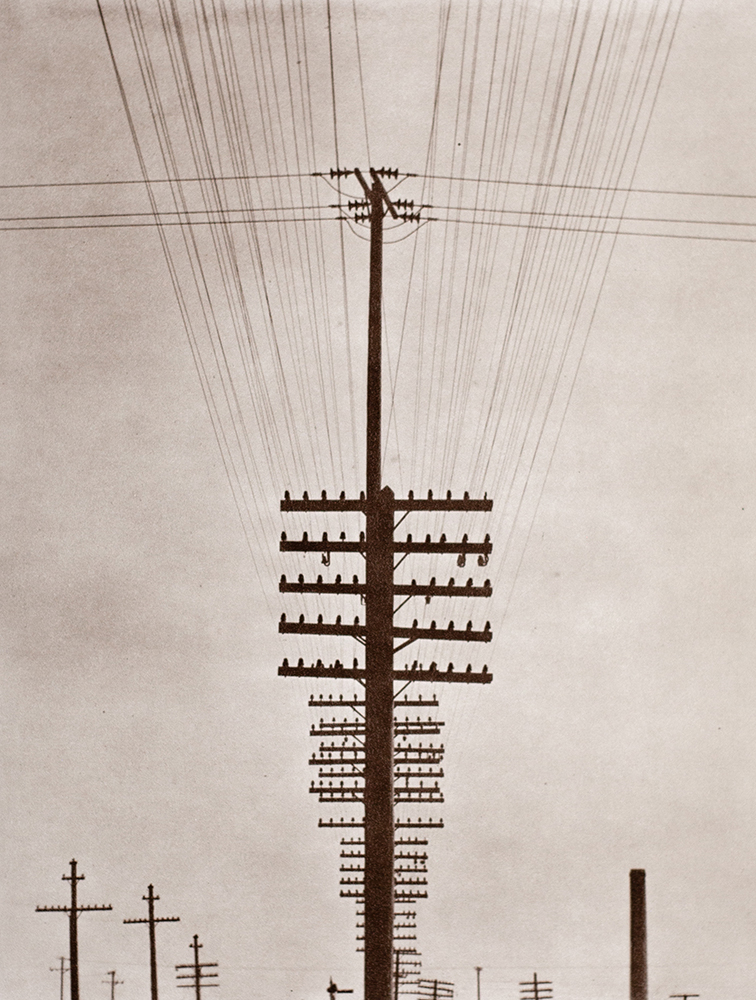
©Tina Modotti (Italian, 1896-1942) Electric Wire, from Electa Editrice series 1979 Heliogravure 15 ¾ x 11 ¾ inches
AS: Now I want to discuss your own photo journey. Tell us about your growing up and what brought you to photography.
LP: My parents were children in the Second World War in a part of Italy where the German army was fighting with Italian partisans. My parents made it to grade 6, then left school and went to work in various factory and construction-based jobs. My mother ended up as a seamstress and father as a stone mason. They immigrated to Canada and lived the immigrant life, they could barely read and constantly struggled with their wartime trauma. I grew up learning survival strategies as the child of wartime immigrants. I listened to their oral histories based on Nazi occupation, wartime violence, poverty, and being an immigrant in a country like Canada where the Royal Family was the colonial symbol on everything. This shaped the way I viewed the world. When I first saw images of the Second World War, it was in books at the library and photography helped me imagine their traumas. Photography was the form in which I understood the cruelty of the war where people were murdered by hanging and some ate their pets to survive starvation, those were true stories my parents told me. That gave me purpose, when I got to my teenage years, from here on photography would be the vehicle in which I would express myself.

©Lucia Moholy (British, born Prague, 1894–1989) Stage set for László Maholy-Nagy’s Tales of Hoffman, Berlin 1929-1930 Gelatin silver prints Each print 10 ¼ x 10 ¾ inches each, mounted to single board 12 x 23.25 inches
AS: Why did you select war photography as a focus?
LP: I needed a few decades to really understand that the particular game of hide and seek my mother played with me simulated hiding from soldiers searching her home for partisans and weapons. My father and his friends with similar backgrounds taught me the same, how to run to the forest to hide, it’s all quite clear to me how they were teaching me survival strategies. My neighborhood friends had similar experiences, one of my Irish friends mom hung photos outside their bedrooms of British forces burning the roofs off of homes of Irish families being evicted from their homes. When my friend asked why she hung those, his mother said it can happen again. So, I needed to go to war for more than the obvious reason of being a photojournalist and covering pressing world issues because I had my own as well.
AS: Your own practice has used methodologies not common to documentary projects. I remember purchasing your book Front Towards Enemy and being so inspired by your ability to create a whole exhibition behind book covers. Also, the brilliant Ice Block project that won the Arnold Newman Prize was totally innovative. You truly straddle the fine art and documentary realms. When did you begin to shift the way, you presented your work.
LP: I think we should all strive to innovate, that can also mean reviving old ideas and tools for new issues. I do believe that materiality is important, its why I said earlier we should think about more than inkjet prints. I had an incredible thesis advisor when I was an MFA student at MICA, his name was Howard el-Yasin and he always asked questions and my guess was he was always hoping for a new answer or approach to creating work. My work with melting ice is one example, we need to break the mold so we can create new forms and challenge the system.
AS: What is the future of the 192 Archive?
LP: The archive one day will be placed in an appropriate educational and research institution in a community with the most robust institutional support along with the right city and state support that is in line with the archive’s mission. I would also like to mention that for simplicity’s sake the archive exists online on Facebook only for now to keep costs and admin low.
AS: Will the show travel?
LP: I really would like to travel this show to keep promoting these artists. If you know of anyone or you are reading this and are at a gallery or museum that wants to exhibit the work, please contact me here louie@louiepalu.com
Total artists 75
Total publications 9
Total artist groups 3
Posts on Lenscratch may not be reproduced without the permission of the Lenscratch staff and the photographer.
Recommended
-
The Female Gaze: Alysia Macaulay – Forms Uniquely Her OwnDecember 17th, 2025
-
Bill Armstrong: All A Blur: Photographs from the Infinity SeriesNovember 17th, 2025
-
Robert Rauschenberg at Gemini G.E.LOctober 18th, 2025
-
Erin Shirreff: Permanent DraftsAugust 24th, 2025
-
Shelagh Howard: The Secret KeepersJuly 7th, 2025

